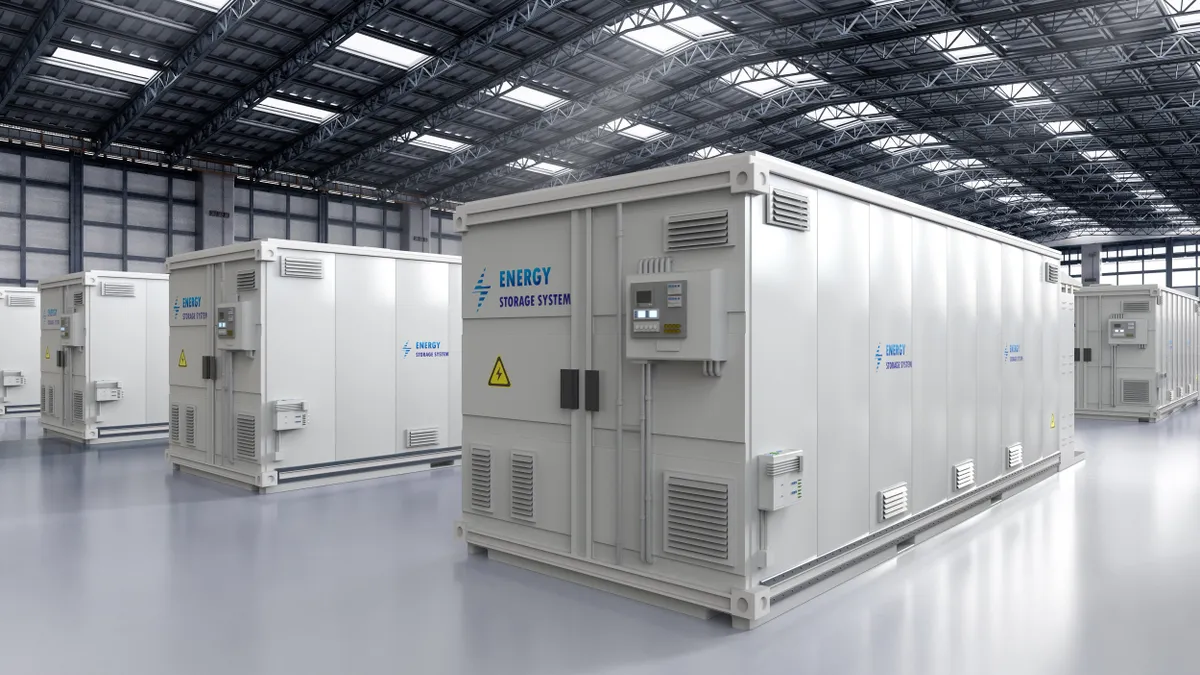Dive Brief:
- Battery energy storage systems may contain more defects and deviate from industry best practices more often than expected, according to six years of factory quality audits by industry advisory firm Clean Energy Associates.
- More than a quarter of inspected energy storage systems, totaling more than 30 GWh, had issues related to fire detection and suppression, such as faulty smoke and temperature sensors, according to the report.
- While the industry has generally focused on cell integrity, system level issues accounted for nearly half of the defects identified by Clean Energy Associates.
Dive Insight:
A significant percentage of the world's energy storage systems could contain defects that pose a risk of thermal runaway and fire, according to data released last week by Clean Energy Associates.
The advisory firm has compiled factory quality audit data on 64% of tier one lithium-ion battery energy storage system manufacturers over the past six years, identifying more than 1,300 manufacturing defects in the process. They found that 26% of energy storage systems contained fire suppression system defects, while 18% had defects in thermal management systems. Tier one systems are considered suitable for use in EVs manufactured outside of China, according to Benchmark Mineral Intelligence.
Faulty actuators that did not respond to the command to release a fire extinguishing agent were a relatively common finding in the Clean Energy Associates audits. The auditors also commonly encountered incorrect wiring in smoke sensors and temperature sensors, and often found fire alarm abort buttons unresponsive. Failure to deactivate a false alarm could lead to unnecessary releases of fire extinguishing agent or unwanted sprinkler system activation, which could cause serious damage to energy storage equipment, according to Clean Energy Associates.
More than half of the issues identified by Clean Energy Associates were system-level defects related to improper system integration procedures, according to the report. These defects include issues such as improper wiring and coolant leaks due to defective valves and loose pipe connections.
However, defects in the battery cells themselves accounted for just under a third of the issues identified by Clean Energy Associates. Cell-level defects typically pose greater risk to energy storage system performance and safety than system-level issues, according to Clean Energy Associates. Common problems include lack of calibration and welding defects, as well as electrolyte leakage, according to the report.
A final 23% of issues identified were related to battery module assembly, according to the report. Most module-level defects could be attributed to manual production lines, according to Clean Energy Associates.
The American Clean Power Association said the report should not be taken to suggest that these defects are prevalent in large numbers in installed energy storage systems already connected to the grid. Existing industry practices mean installers screen for and correct the deficiencies observed by Clean Energy Associates prior to system installation, according to Noah Roberts, senior director of energy storage for the association.
“Under current industry standard practices, and the nationally recommended safety standard, NFPA 855, all of the faults identified in this report would be corrected during the project installation and commissioning process,” Roberts said in a statement. “As we have seen over the past few years, the leadership of the energy storage industry and its prioritization of safety and reliability has made fire incidents in the field increasingly rare.”
Editor’s Note: This story has been updated with comments from the American Clean Power Association.













